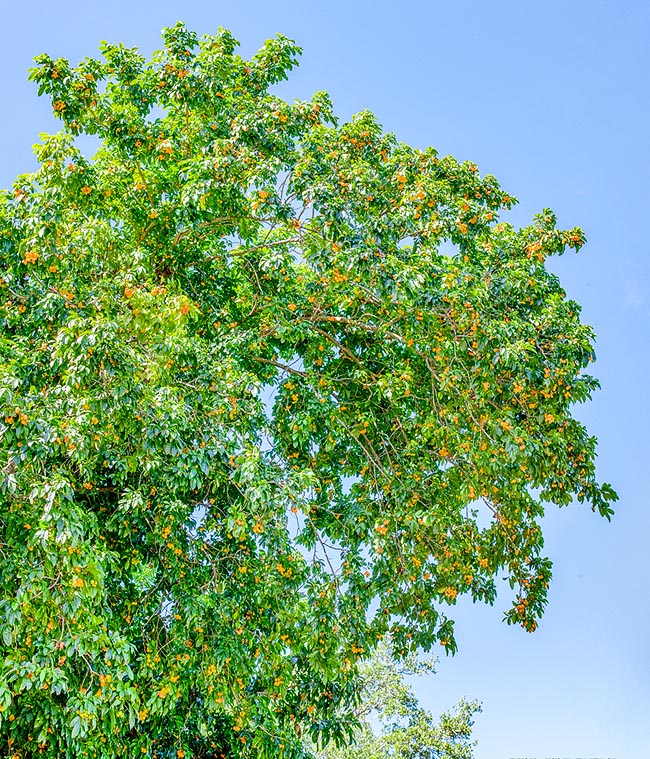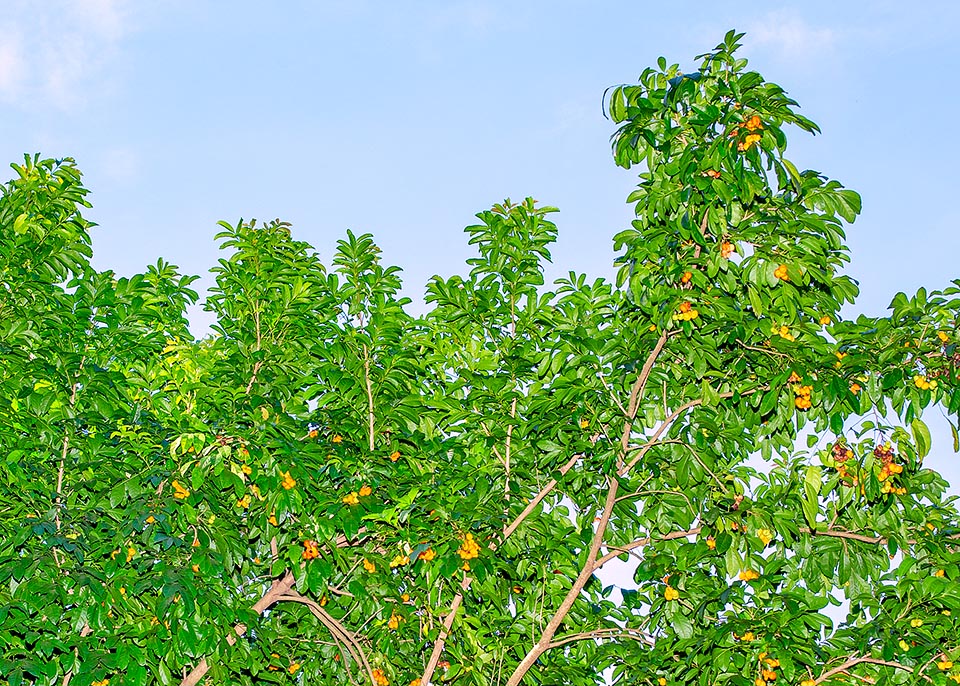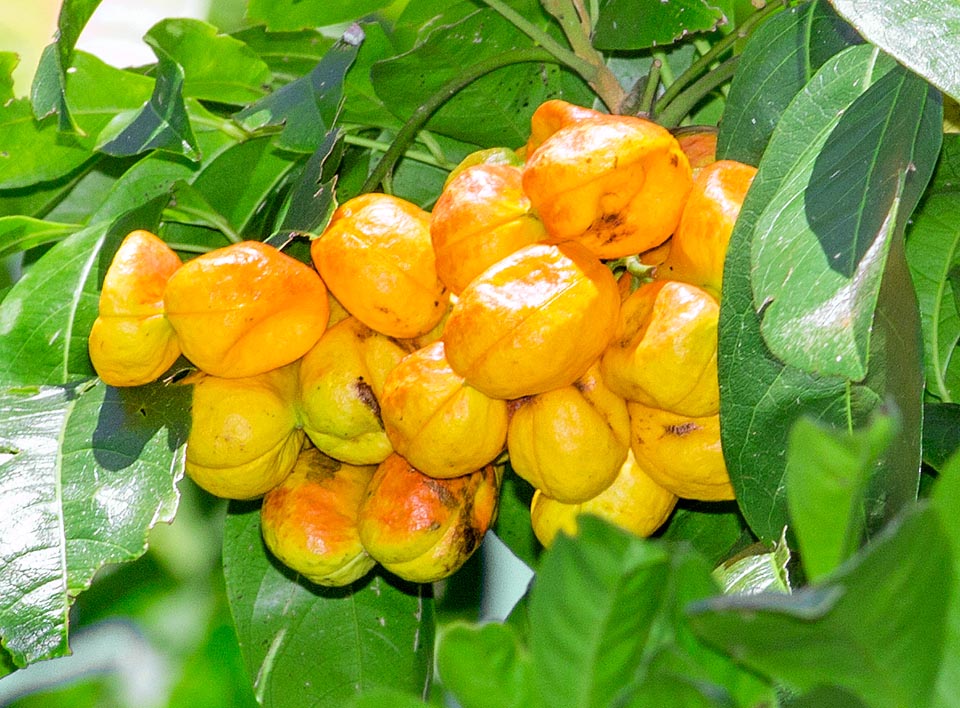Family : Sapindaceae

Text © Pietro Puccio

English translation by Mario Beltramini

The Harpullia pendula is a New South Wales and Queensland evergreen that in nature exceeds the 20 m of height © Giuseppe Mazza
The species is native to Australia (New South Wales and Queensland) where it lives in the under-wood of the dry as well as humid forests on alluvial and basaltic soils, often on the banks of water streams, at low and medium altitudes.
The name of the genus comes from the Bengali local one “harpuli” of the Harpullia cupanioides Roxb.
The name of the species is the Latin adjective “pendulus, a, um” = drooping, with reference to the pendulous inflorescences.
Common names: Australian tulipwood, black-tulip, mogun-mogun, Moraton Bay tulipwood, Queensland tulipwood, tuliplancewood, tulipwood (English).
The Harpullia pendula Planch. ex F. Muell. (1859) is an evergreen tree, up to more than 20 m tall, but that in cultivation keeps lower, with the thick globose crown and trunk, of 35-60 cm of diameter, with grey and wrinkled bark tending to flake off irregularly with the age.
The leaves, on a 2,5 cm long petiole, are alternate, pinnate, 15-30 cm long, with 3-8 leaflets, often arranged irregularly on the sides of the rachis, oblong-elliptic with obtuse apex and entire margin, 5-12 cm long and 2-4 cm broad, coriaceous, of glossy intense green colour above, paler below.
Drooping panicle axillar inflorescences, 10-30 cm long, with functionally unisexual flowers of about 1,8 cm of diameter, slightly fragrant, with 5 free sepals almost orbicular, about 0,4 cm long, brown-reddish, 5 oblong petals about 0,8 cm long, yellow-greenish and pubescent inside, 8 stamens and bilocular pubescent globose ovary.
The fruits are bilobed capsules, 1,3-1,5 cm long and 2-3 cm broad, of yellow to red orange colour, containing one ovoid seed of glossy blackish colour per lobe.

At the base the trunk has a diameter of 35-60 cm. The thick, globose crown has alternate leaves, coriaceous, even 30 cm long © Giuseppe Mazza
It reproduces by seed, of short lasting germinability, previously kept in water for 3 days, in draining loam maintained humid at the temperature of 24-28 °C, with germination times of 3-8 weeks, and by cutting.
Tree with compact crown and ornamental brightly coloured fruits opening in winter that provide a glimpse of the glossy seeds; thanks to its rather slow growth, the non-invasive root apparatus and the resistance to the urban pollution is often utilized in Australia and in some tropical countries for street trees, as well as to shade squares and public and private gardens.

The fruits, yellow to red orange, are bilobed capsules, similar at first sight to adjacent balloons, even 3 cm broad © Giuseppe Mazza
It grows in full sun as well in partial shade and on various types of soil, humid as well as semi-arid, clayey or compact, furthermore it bears the salty winds and therefore can be employed near the sea.
The wood, of fine grain, hard, lasting, heavy, with neat contrast of colour between cream white sapwood and dark brown heartwood, easy to work and to be finished, very appreciated and sought for in the past for cabinet-making works, paneling, covering, doors, walking sticks and prized furniture is now available in limited quantity due to the excessive exploitation that has been done.
→ To appreciate the biodiversity within the SAPINDACEAE family please click here.
